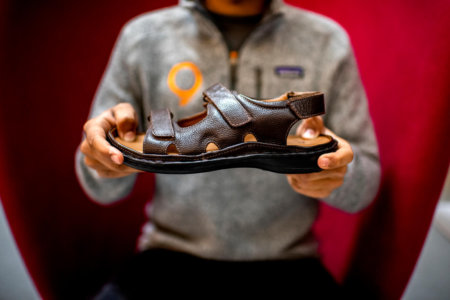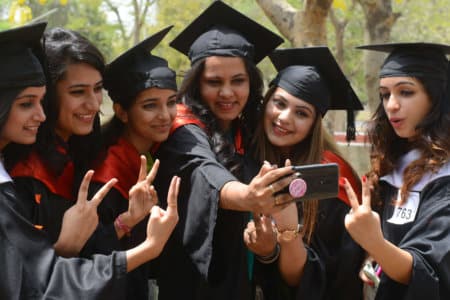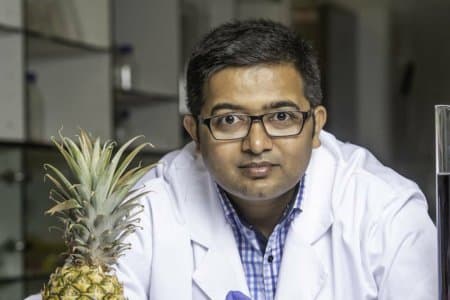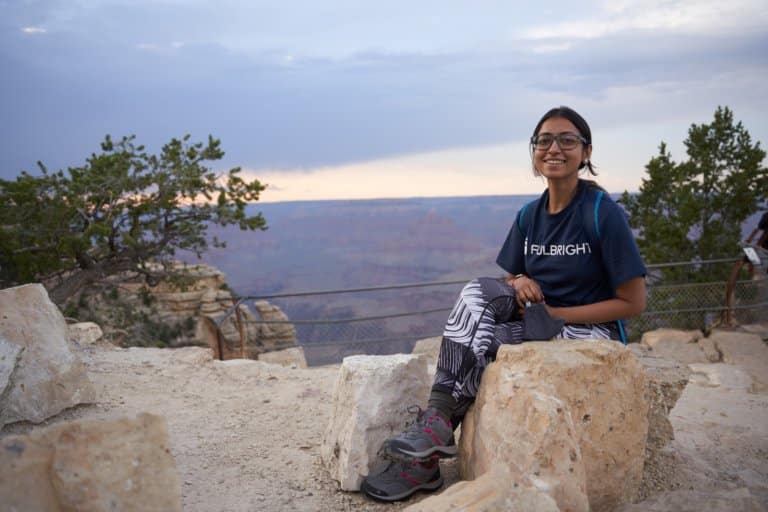
India, the world’s largest democracy and the US, a superpower — there seemed no greater two countries to compare women’s participation in politics and social movements.
The answers unearthed by this analysis could be significant — and Sohini Dutta, an IIT Bombay graduate, got the opportunity to seek them thanks to her Fulbright-Nehru Doctoral Research Fellowship.
“For my PhD thesis, I have been working on the questions of gender and political participation in India. By analysing both electoral politics and social movements in contemporary India, my thesis aims to theorise the questions of gender, performance, body and nation-making,” she says.
“Considering how contemporary American politics has been seeing a greater number of female participation, in both electoral politics and social movements, I wanted to make a comparative analysis between Indian and American politics in order to better address my research questions.”
Dutta not only got the supervision of Prof. Richa Nagar at the University of Minnesota Twin Cities, she got to conduct fieldwork too, interviewing 10 respondents from five NGOs in the US working closely with women’s political participation.
Her thesis wasn’t the only thing broadened by her nine-month stint in the US. Dutta’s mind got a solid dose of awe when she visited the Grand Canyon, the country’s most vast and most majestic expanse of land.
We caught up with Dutta to learn more about how she won the Fulbright-Nehru Doctoral Research Fellowship to the University of Minnesota and the extraordinary journey that followed since:
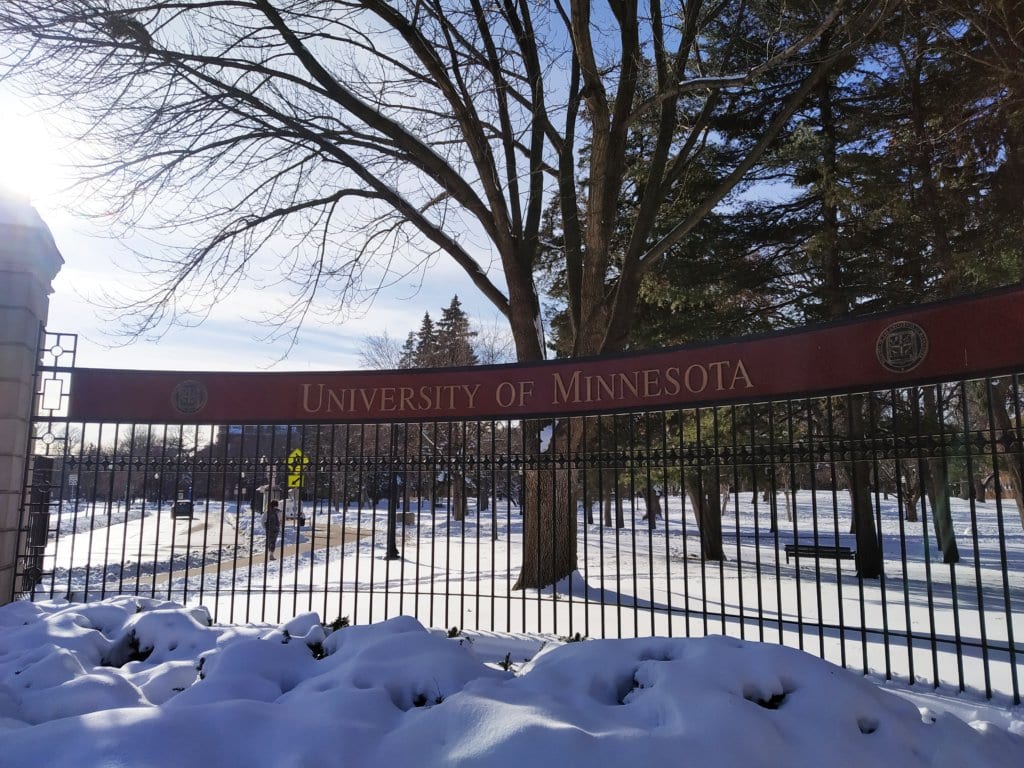
Sohini Dutta loved her time at the University of Minnesota Twin Cities, where she was welcomed from day one. Source: Sohini Dutta
1. How did you find out about the Fulbright-Nehru Doctoral Research Fellowship?
I found out about the Fulbright-Nehru Doctoral Research scholarship from one of my seniors at IIT-Bombay. She received the grant during the 2019-20 cycle which is when she told me about the scholarship in greater detail.
2. Can you detail the application process from start to end, please? If you could describe this process in one word, what would it be and why?
The application process was in two parts. Firstly, an online application form was filled out and submitted. This application form included all our personal and research details along with a Statement of Purpose and a Personal Statement.
Secondly, an interview was conducted for the applicants selected on the basis of this online application. Subject experts and Fulbright officials interviewed us on the scope of our research and the relevance of our US visit to enhance our research.
The one word I would use to describe this process would be “eye-opening.” The lengthy application form with its detailed questions made me gain a new perspective towards my research.
Additionally, the interview helped me articulate my research with clarity and conviction like never before. I believe that the application process in itself would have contributed to a lot of learning even if I had not received the grant.
3. What was the easiest and hardest part of the application process?
For me, the most difficult part of the application process was the length of it and the sheer amount of details it demanded. Considering that this was my first foreign grant application, I was quite intimidated by it initially.
With the support of my seniors, who had already gone through this process earlier, I was able to take the questions one and a time and steadily complete and submit the application on time.
4. Tell us more about your thesis. Why did you choose to travel to the US for nine months and enhance your doctoral thesis through cross-cultural research collaboration?
For my PhD thesis, I have been working on the questions of gender and political participation in India. By analysing both electoral politics and social movements in contemporary India, my thesis aims to theorise the questions of gender, performance, body and nation-making.
Considering how contemporary American politics has been seeing a greater number of female participation, in both electoral politics and social movements, I wanted to make a comparative analysis between Indian and American politics in order to better address my research questions.
I was interested in doing both fieldwork with women in politics and accessing archival material related to female political participation in the US.

A woman steps close to the edge to enjoy the breathtaking view of the Grand Canyon from the South Rim side. Source: Daniel Slim/AFP
5. What was your most memorable academic experience at the University of Minnesota?
Although I was in the US where things had not entirely opened up post-COVID, and in-person formal interactions were still limited, I was able to share my research with the community at my host institution, the University of Minnesota Twin Cities.
I was invited to present my research at the “Brown Bag” talk series which saw the attendance of students and faculty members. My research was met with a lot of appreciation and also interrogation which helped me take cognizance of the gaps.
I was able to engage with a lot of academics at that talk which made it the most memorable academic experience during my time in the US.
6. What was your most memorable non-academic experience in the US so far?
During my time in the US, I had the opportunity to visit a few places in the country. The most memorable of them all was my visit to the Grand Canyon. I shall always remember the feeling of awe that I experienced when I first saw the vast expanse of open land in front of me.
I was able to catch the sunrise at the Grand Canyon and that vision will always remain the most memorable non-academic experience from my Fulbright term.
7. What was the most emotional part of your Fulbright journey so far?
I would say it was when I was leaving all the friends I had made during the nine months of my stay.
In spite of landing in a new country in the middle of a pandemic, I was lucky to be made at home from the very beginning by my landlady, my professors at the host institute and my friends at the department.
I was also very close to my landlady’s cat, Hazel, who had camped in my room during the entire duration of my stay. The day I left I picked up Hazel, hugged her as tightly as she would allow me and wept for a good 10 to 15 minutes.
I am happy that I could make memories that made me so emotional to leave a country which so foreign to me.
8. How do you plan to make a difference with your US degree?
I have learnt a lot from my time in the US. I have had access to some of the best libraries in the world and I have been able to engage with some of the brightest minds in academics today.
All these interactions and engagements have enriched not only my current research but overall outlook towards academic research.
have also been greatly inspired by the enthusiastic approach towards interdisciplinary research in the US, something I feel is lacking in Indian academics.
I hope that I can contribute towards rethinking pedagogy here in India such that there is greater scope and acceptability of interdisciplinary research which, I feel, would open up more avenues for newer and more exciting thoughts.
9. What do you like and dislike most about the US?
Contrary to what I had assumed it would be, I was lucky enough to find warm and welcoming people in the US from the very first day of acceptance at the University of Minnesota.
I was made to feel at home and everyone I met was eager to help me out so that I could settle down in a new country in the most convenient manner. I liked that the most about the US.
The one thing I dislike the most is the lack of accessible and safe public transport in smaller cities, such as the one I was in. As a student, I was unable to afford a private vehicle for myself. It left me incapable of travelling to many places for fun and sometimes even for work.
Although there was a public transit system around Minneapolis, it did not feel safe, especially in the early mornings and late evenings. Also, there were very few affordable options to travel to other states in the US which made exploring the country on a budget quite difficult.
10. In your LinkedIn profile, you mentioned you founded a social impact venture focused on transforming schools into safe spaces through social and emotional learning. In what ways are Indian schools not safe spaces?
One significant way in which Indian classrooms are not safe spaces is that they are not inclusive in nature. India is a diverse nation with various cultures, languages, philosophies, religions, castes and classes.
Despite such diversity, and a belief in its unity, students face discrimination in the educational spaces. Additionally, there is a lack of understanding that the ability of every student to absorb classroom learning is not the same.
Some students have an active pace in learning while others are more passive learners. Also, students in the classroom often don’t feel included because of the hierarchy that exists between the teacher and the student for which the learning experience becomes not entirely enjoyable and beneficial for the students.
A research study conducted by Holley and Steiner (2005) on data from a survey investigates a student’s perspective of safe and unsafe settings in a school.
Most of the students who participated in the survey revealed that being in a safe classroom altered not only what they learned but also how extensively they learned it.
Additionally, according to the National School Climate Centre, a safe and supervised school environment is one in which students feel firmly attached to others, honoured, and made to believe that their work is significant and that they are promising at what they do.
Schools in India can become safe spaces by ensuring that education is practised without bias to race, gender, colour, religion, language, national and/or social origin, political and/or personal opinion, birth or any other status markers.
Indian education also needs to acknowledge the fact that the teaching process cannot remain identical for every student in the classroom.
With social and emotional learning, teachers can be more aware of behaviour management and communication, therefore, being more tuned towards each child’s learning requirements.
A healthy inclusive education can happen mainly through attaining, understanding and following student differences and multiplicities which can include natural, physical, educational, social and emotional features.
Students’ and even educators’ thoughts, uniqueness, perspectives, opinions and identity (social, sexual, gender) should be celebrated and included to make learning happen in a safe space.








